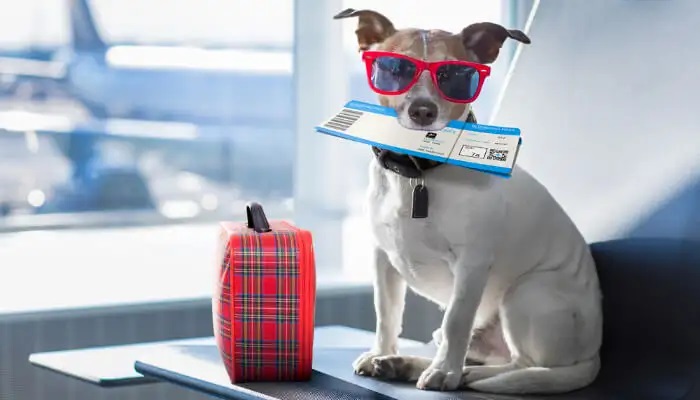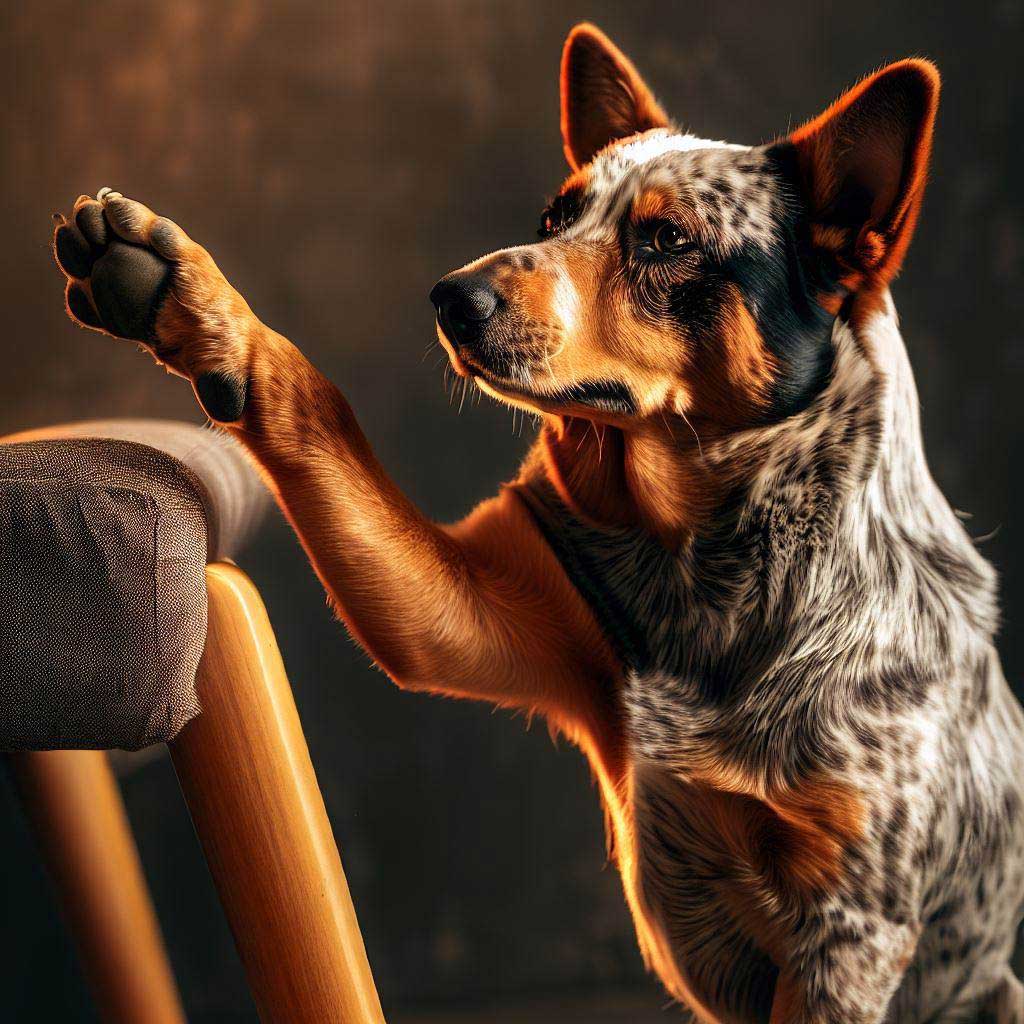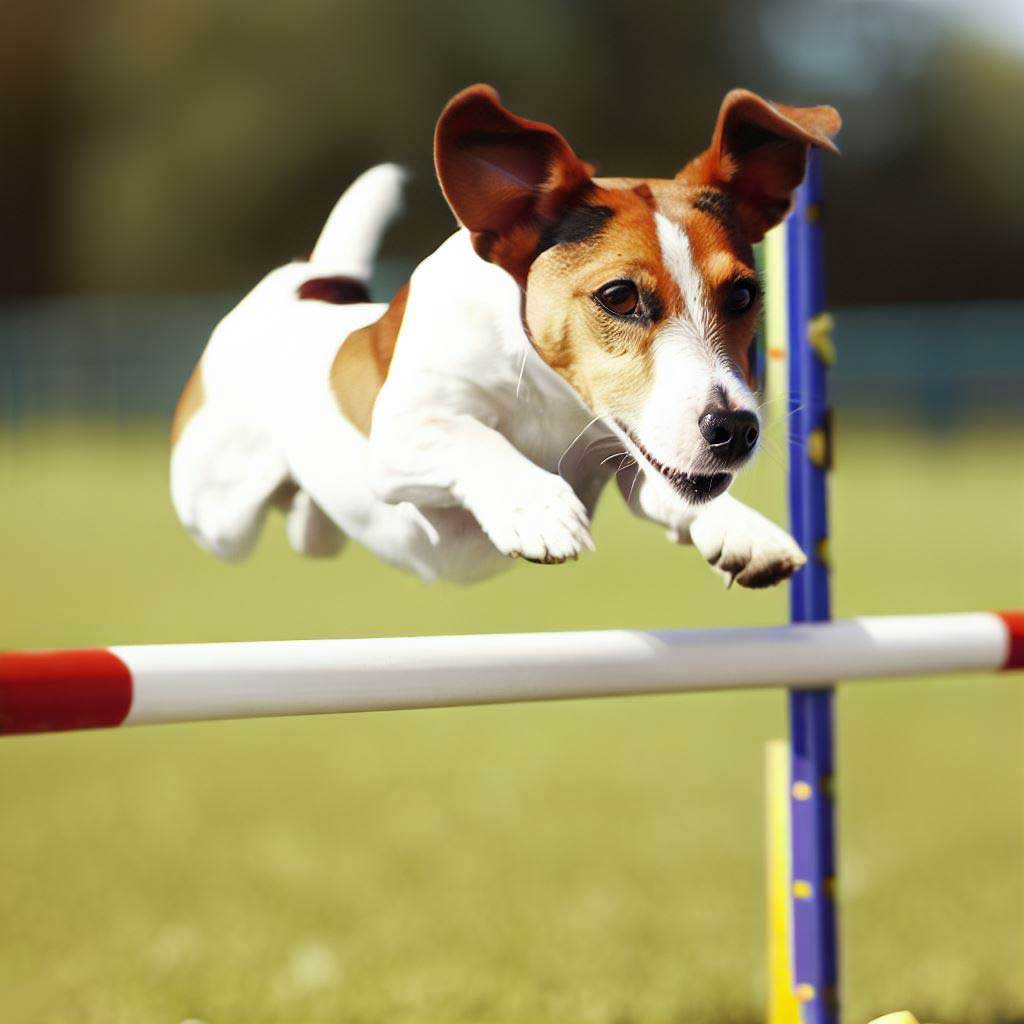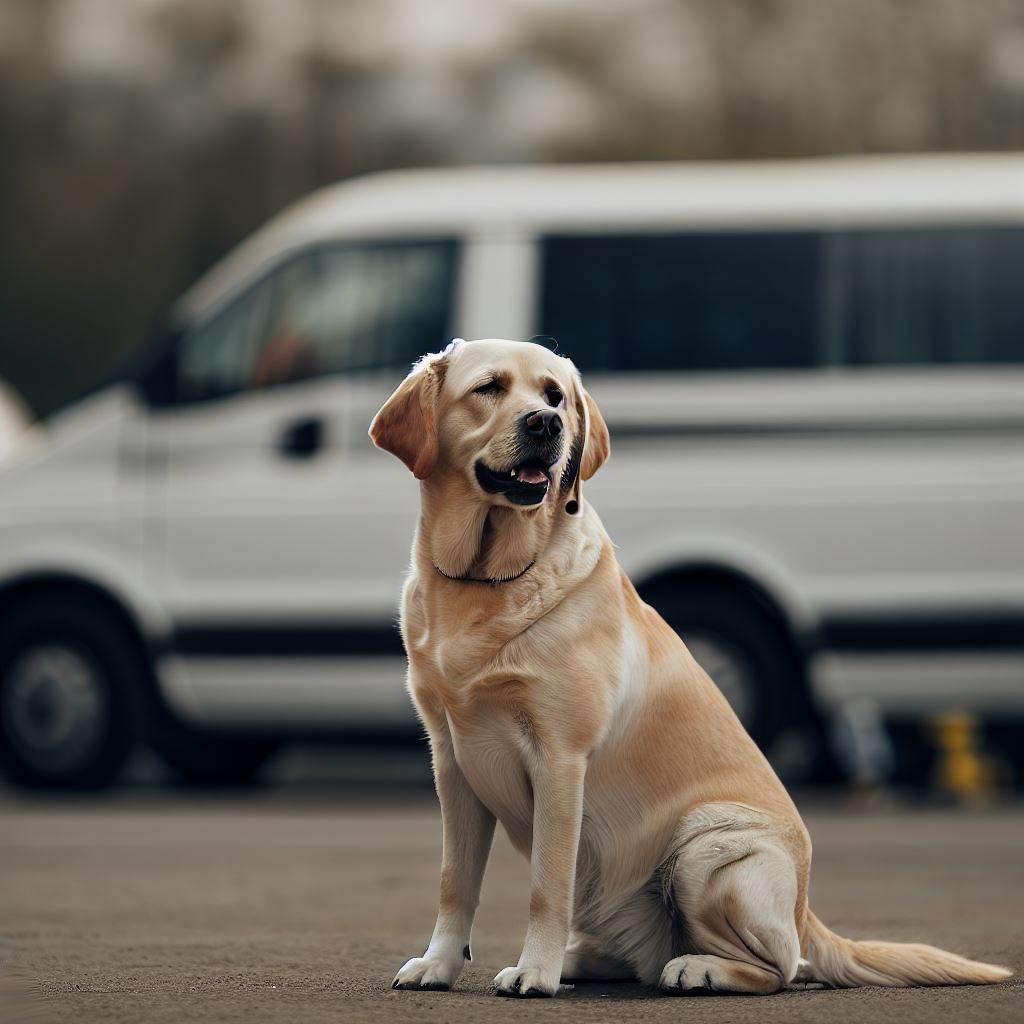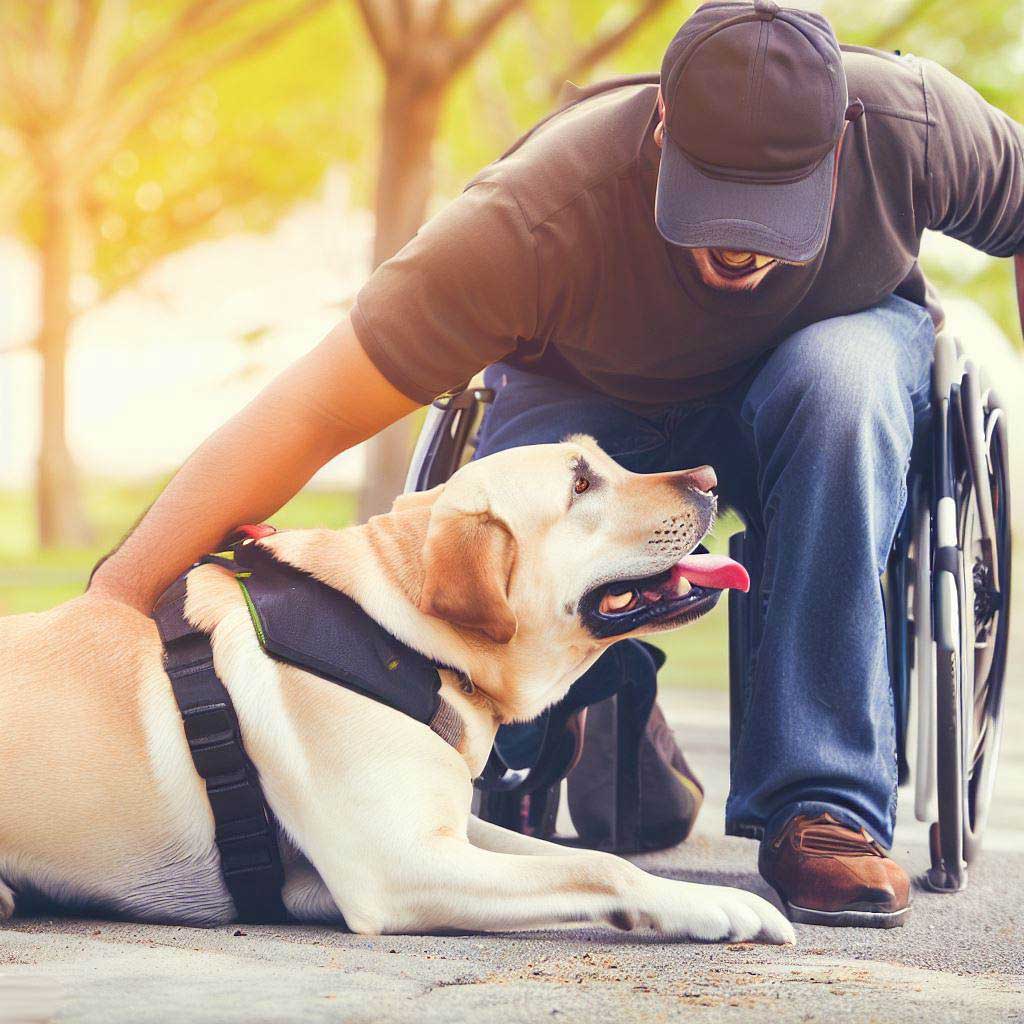Which Are The Best Dogs To Travel With?
Best Dogs To Travel With – Travel Tips and Top Breeds. Discover the perfect breeds for adventures and essential travel advice!
Table of Contents
As seasoned dog owners and travel enthusiasts, we’ve learned that journeying with our furry companions can turn any ordinary trip into an exciting adventure.
There’s something uniquely rewarding about seeing new sights alongside a wagging tail. But before you start planning your next vacation with your dog, it’s important to understand the benefits and challenges of traveling with dogs. So what are the best dogs to travel with you ask? Lets find out.
The Benefits and Challenges of Traveling with Dogs
One of the major benefits of traveling with dogs is that they offer great company. A loyal dog can make even the most tedious journeys more fun and enjoyable. Plus, having your dog by your side can be comforting, particularly if you’re traveling alone.
However, it’s not always smooth sailing—or cruising down the highway. Each dog is unique, and some might find the changing environments and routines that come with travel stressful. Factors like size, temperament, and breed can all impact how well a dog adapts to travel.
Some dogs, for example, may suffer from motion sickness in cars or planes. Others might become nervous or agitated in unfamiliar environments. It’s also important to note that not all travel destinations are dog-friendly, and there may be restrictions or extra costs involved when bringing your dog.
Why Some Dogs are Better Travel Companions Than Others
Just as each dog is unique, some breeds are more naturally predisposed to be the “best dogs to travel with.” Dogs with a calm temperament, such as the Labrador Retriever or the French Bulldog, often adapt well to the unpredictability of travel. These breeds are known for their good-natured demeanor and ability to handle new situations and environments without getting overly anxious.
On the other hand, some dogs might struggle more with travel. For example, brachycephalic breeds like Bulldogs and Pugs can have difficulty with high altitude or hot temperatures due to their short snouts. Some high-energy breeds, like Border Collies, may also find the confinement of travel challenging.
How to Use this Guide to Find the “Best Dogs to Travel With”
The purpose of this guide is to help you understand what makes a dog a good travel companion. As we explore various topics—from size and breed considerations to traveling methods—we’ll highlight examples of the best dogs to travel with and offer practical tips for making travel enjoyable for any dog.
Remember, though, that every dog is an individual. Even within breeds known for being good travelers, there will be some dogs that aren’t keen on journeying. Similarly, a breed not typically associated with travel might produce a fantastic travel companion in the right circumstances.
Ultimately, knowing your dog’s behavior, temperament, and needs, as well as being prepared for any situation, is the key to successful travel. Whether you’re looking to adopt a dog and want to choose a breed known for being a good traveler, or you’re hoping to help your current pet become more comfortable on trips, this guide to the “best dogs to travel with” is a great place to start.

Understanding Dog Breeds and Sizes for Travel
When planning to travel with a dog, it’s crucial to consider their breed and size. Each breed comes with unique traits, and the size of the dog can significantly influence your travel experience. To understand why size matters and which breeds are considered the “best dogs to travel with,” let’s dive into the advantages and disadvantages of traveling with small and large dogs.
Small Dogs: Their Advantages and Disadvantages for Travel
Small dogs, like French Bulldogs, Cavalier King Charles Spaniels, and Chihuahuas, often make excellent travel companions. Their compact size means they can more easily fit into airline-approved carriers, making air travel a smoother process. Additionally, smaller dogs are typically more manageable in terms of transportation and accommodation. For instance, it’s easier to secure rental accommodations that allow small dogs than those allowing larger breeds.
However, there are some disadvantages to traveling with small dogs. Due to their size, they might be more susceptible to getting injured, especially in crowded or unfamiliar environments. Small dogs can also be more sensitive to temperature changes and may require extra care in extreme climates.
Large Dogs: Their Advantages and Disadvantages for Travel
On the other end of the spectrum, we have large dogs, such as Labrador Retrievers, German Shepherds, and Golden Retrievers. These breeds are often great companions due to their adaptable nature and generally calm temperament, making them some of the “best dogs to travel with.” They are usually robust and less susceptible to injury, and can be better suited for outdoor adventures, such as camping or hiking trips.
The main disadvantage of traveling with larger dogs is the logistical challenges. Their size can make transport more difficult, especially air travel. Many airlines have restrictions on traveling with large dogs, often requiring them to be transported in the cargo hold. Accommodations may also have size limitations or breed restrictions that exclude larger dogs.
The “Best Dogs to Travel With” Based on Size and Breed
Determining the “best dogs to travel with” really comes down to the specific needs of the trip and the individual dog’s temperament. Small dogs like the Bichon Frise, known for its adaptable and friendly nature, or the resilient Dachshund, renowned for its adventurous spirit, often make great travel companions.
Among large breeds, Labrador Retrievers are frequently considered one of the best dogs to travel with due to their calm demeanor and eagerness to please. Similarly, Boxers, known for their love of family and adaptability, can also make great travel companions.
Remember, regardless of breed or size, your dog’s temperament, training, and comfort with travel are the most important factors. Always consider your dog’s personality and well-being when planning your travels. With careful planning and consideration, both small and large breeds can make fantastic travel companions, exploring the world at your side.
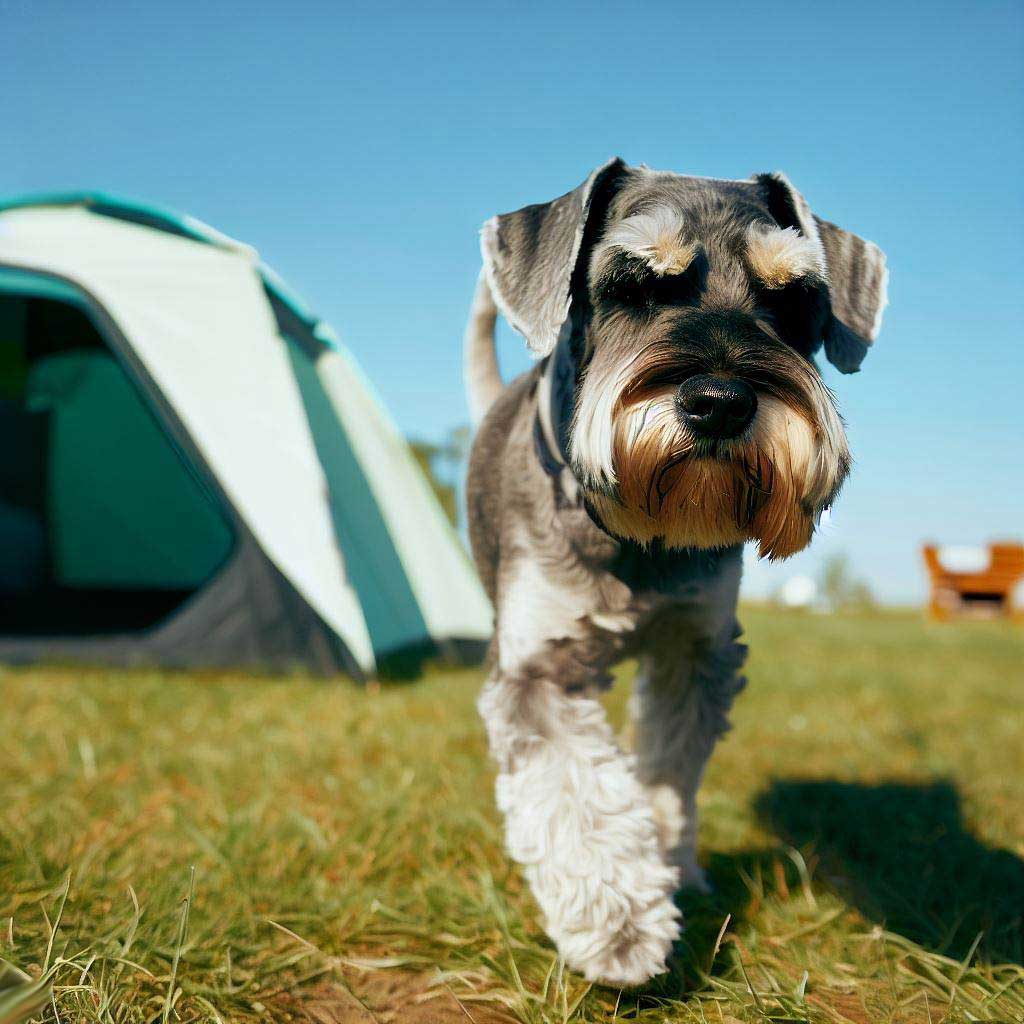
Dog Temperament and Its Role in Travel
When considering the “best dogs to travel with,” breed and size are important factors, but they pale in comparison to the significance of your dog’s temperament. A dog’s temperament can significantly impact their comfort and behavior during travel, making it a crucial factor to consider when planning a trip.
The Importance of a Calm and Adaptable Temperament
Dogs with calm, adaptable temperaments are generally more comfortable with the unpredictability that can come with travel. They can more easily adjust to new environments, unfamiliar people, and varied routines that might otherwise stress a more anxious or reactive dog.
Take a Basset Hound, for example. Known for their easy-going nature, Basset Hounds are usually unfazed by changes in surroundings, making them great travel companions. Similarly, a Bernese Mountain Dog, known for their calm demeanor, can handle the chaos of travel without getting overly stressed.
That said, it’s crucial to remember that even the calmest dog can become anxious in new situations. Preparation and gradual exposure to travel-related experiences are key in ensuring your dog remains calm during your adventures.
Understanding Breed-Specific Temperaments
While each dog is an individual, certain breed-specific temperaments can give you an idea of how well a dog might adjust to travel. For instance, Golden Retrievers are typically sociable and adaptable dogs, qualities that can make travel less stressful. On the other hand, breeds like the Shiba Inu, known for their independent and reserved nature, might find the changes associated with travel more challenging.
It’s important to research breed-specific temperaments, but always remember that there can be wide variation within a breed. Your dog’s individual personality and experiences will also significantly influence their comfort with travel.
The Best Dogs to Travel With Based on Temperament
When it comes to temperament, the “best dogs to travel with” are those that are adaptable, comfortable with new experiences, and able to remain calm in different environments. Breeds like the Labrador Retriever and the Cavalier King Charles Spaniel are often good travelers due to their generally easygoing and adaptable temperaments.
For those interested in smaller breeds, the French Bulldog’s relaxed demeanor and the Pug’s sociable nature often make them good travel companions. However, individual temperaments can vary, so it’s always important to consider your dog’s unique personality and experiences.
A dog’s temperament plays a significant role in how well they handle travel. By understanding breed-specific temperaments and focusing on adaptability and calmness, you can identify the “best dogs to travel with.”
Remember, however, that every dog is unique, and what works for one might not work for another. Patience, preparation, and understanding your dog’s needs are the keys to a successful travel experience.
How to Travel with Dogs in Cars
Traveling with dogs in cars can be a fun and bonding experience, but it requires careful preparation. The comfort and safety of your dog should always be a top priority. Let’s explore some essential safety measures, identify some of the “best dogs to travel with” in cars, and share tips for keeping your dog calm and comfortable during car travel.
Essential Safety Measures for Car Travel
When it comes to car travel with dogs, safety is paramount. Always secure your dog with a crash-tested harness or in a secured crate. Not only will this protect your dog in the event of a crash, but it will also prevent them from distracting the driver.
Remember, just like humans, dogs should never be left alone in cars, especially in extreme weather conditions. Even with windows slightly open, the temperature inside a car can rise rapidly, causing heatstroke or worse.
Lastly, regular breaks are vital for your dog to stretch, hydrate, and relieve themselves. A good rule of thumb is to stop every two to three hours.
Best Dog Breeds for Car Travel
When considering the “best dogs to travel with” by car, look for breeds that are calm, adaptable, and enjoy confined spaces. Here are five examples:
- Golden Retriever: Their calm demeanor and eagerness to please often make car journeys enjoyable experiences.
- Labrador Retriever: Known for being good-natured and adaptable, Labs typically handle car travel well.
- Bulldog: Bulldogs are generally laid back and comfortable in small spaces, making them good companions for car travel.
- Cavalier King Charles Spaniel: These dogs are usually very adaptable and comfortable with car travel thanks to their relaxed and friendly nature.
- Shetland Sheepdog: Their compact size, coupled with an intelligent and eager-to-please temperament, makes them great car travelers.
Tips for Keeping Dogs Calm and Comfortable in Cars
Maintaining your dog’s comfort and calmness during car travel contributes significantly to making them one of the “best dogs to travel with.” Here are five tips:
- Acclimatize Your Dog: Gradually introduce your dog to the car, starting with short trips and slowly increasing the travel time.
- Comfortable Bedding: Ensure your dog has a comfortable place to rest during the journey. Familiar blankets or toys can provide comfort.
- Temperature Control: Maintain a comfortable temperature in the car and provide plenty of fresh water.
- Chew Toys and Treats: Keeping your dog occupied with chew toys and treats can distract them and help reduce anxiety.
- Calm Environment: Keep the noise level low and provide gentle reassurance to your dog throughout the journey. A stressed or excitable driver can often lead to an anxious dog.
Traveling by car with your dog can be a joyful experience with the right preparations. By considering your dog’s breed, temperament, and individual preferences, you can ensure that car journeys are safe and comfortable, turning your dog into one of the best dogs to travel with on your adventures.
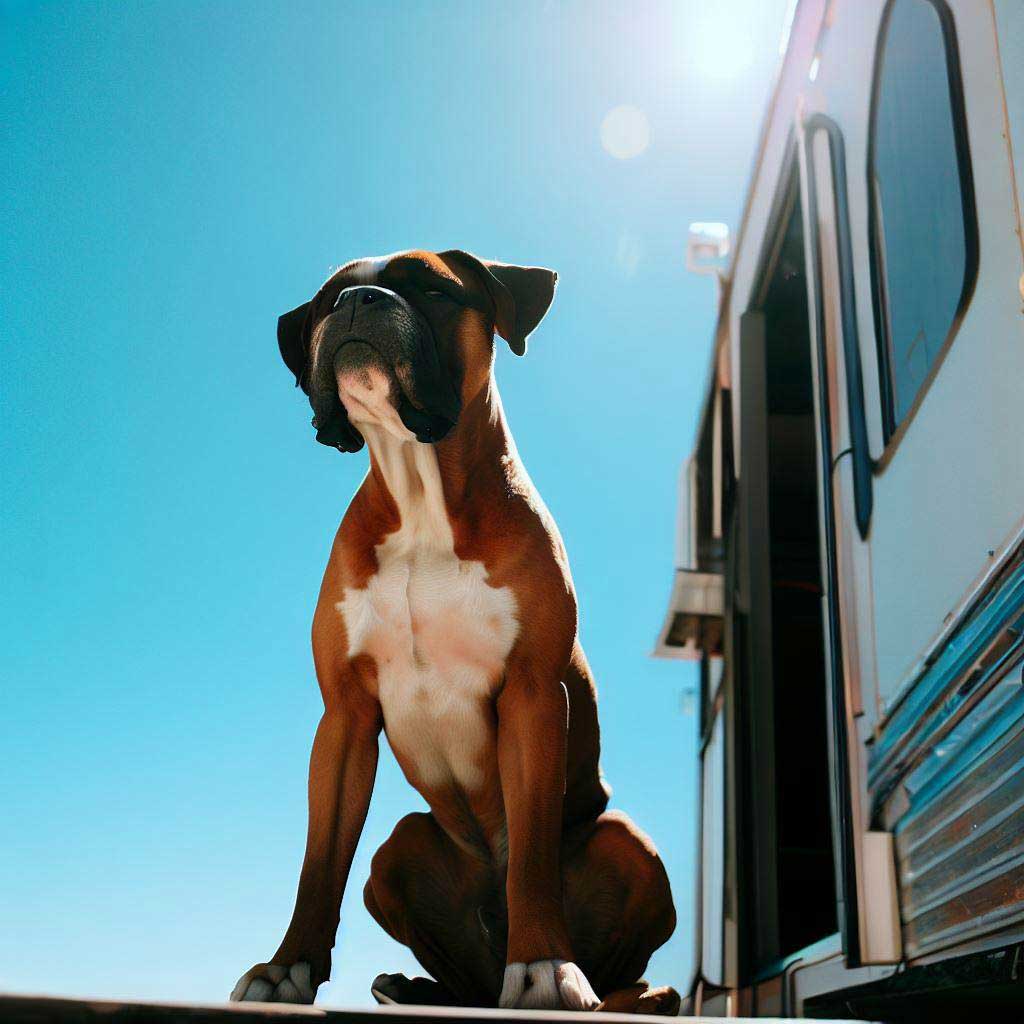
Navigating Motorcycle Travel with Dogs
Traveling with dogs on a motorcycle can be an exhilarating experience. However, it requires thorough preparation and the right equipment to ensure safety. Here’s everything you need to know about motorcycle travel, from the essential gear to the “best dogs to travel with” on motorcycles and how to train your pup for the journey.
Safety Equipment for Motorcycle Travel with Dogs
Before you hit the road, it’s essential to invest in the right safety gear for your furry friend. Here are a few examples:
- Dog Motorcycle Carrier: These carriers are designed to attach to your motorcycle, providing a secure space for your dog. They should be well-ventilated, comfortable, and sturdy.
- Dog Goggles: Protect your dog’s eyes from debris and wind with specially designed dog goggles. Look for adjustable straps to ensure a good fit.
- Dog Helmet: While not always legally required, a helmet can provide additional protection for your dog. Ensure it’s correctly sized for your pup’s breed and head size.
Best Dogs to Travel With on Motorcycles
When it comes to motorcycle travel, the “best dogs to travel with” are generally smaller breeds that can comfortably fit in a carrier. Additionally, they should have a calm and adaptable temperament. Here are five breeds that typically fit the bill:
- French Bulldogs: With their compact size and laid-back personality, French Bulldogs often handle motorcycle travel well.
- Boston Terriers: These dogs are small, adaptable, and generally do well in various travel conditions.
- Pomeranians: Pomeranians are small and sturdy, usually enjoying the adventure as long as they’re well-secured.
- Cavalier King Charles Spaniels: Known for their adaptability and calm demeanor, these dogs can be excellent motorcycle travel companions.
- Shih Tzus: Shih Tzus are often relaxed travelers, their small size makes them easy to secure safely on a motorcycle.
Tips for Training Your Dog for Motorcycle Travel
Proper training can make motorcycle travel safer and more enjoyable for your dog. Here are five tips:
- Gradual Introduction: Start by letting your dog explore the motorcycle and carrier while stationary. Gradually progress to short trips, slowly increasing the length of your journeys.
- Positive Reinforcement: Reward your dog for calm behavior around the motorcycle and during trips. This will create positive associations with the experience.
- Consistent Breaks: Regular stops allow your dog to stretch, hydrate, and relieve themselves. This will help prevent discomfort and anxiety.
- Desensitization: If your dog is sensitive to noise, gradually desensitize them to the sound of the motorcycle before embarking on a trip.
- Equipment Familiarization: Allow your dog to wear their goggles and helmet during calm moments at home before the trip. This will help them adjust to the sensation.
Motorcycle travel with dogs can be an unforgettable experience when done safely. The best dogs to travel with on motorcycles are those that are well-prepared, properly equipped, and comfortable with the experience.
Remember, every dog is different, and what works for one may not work for another. Always prioritize your dog’s safety and comfort for a successful journey.
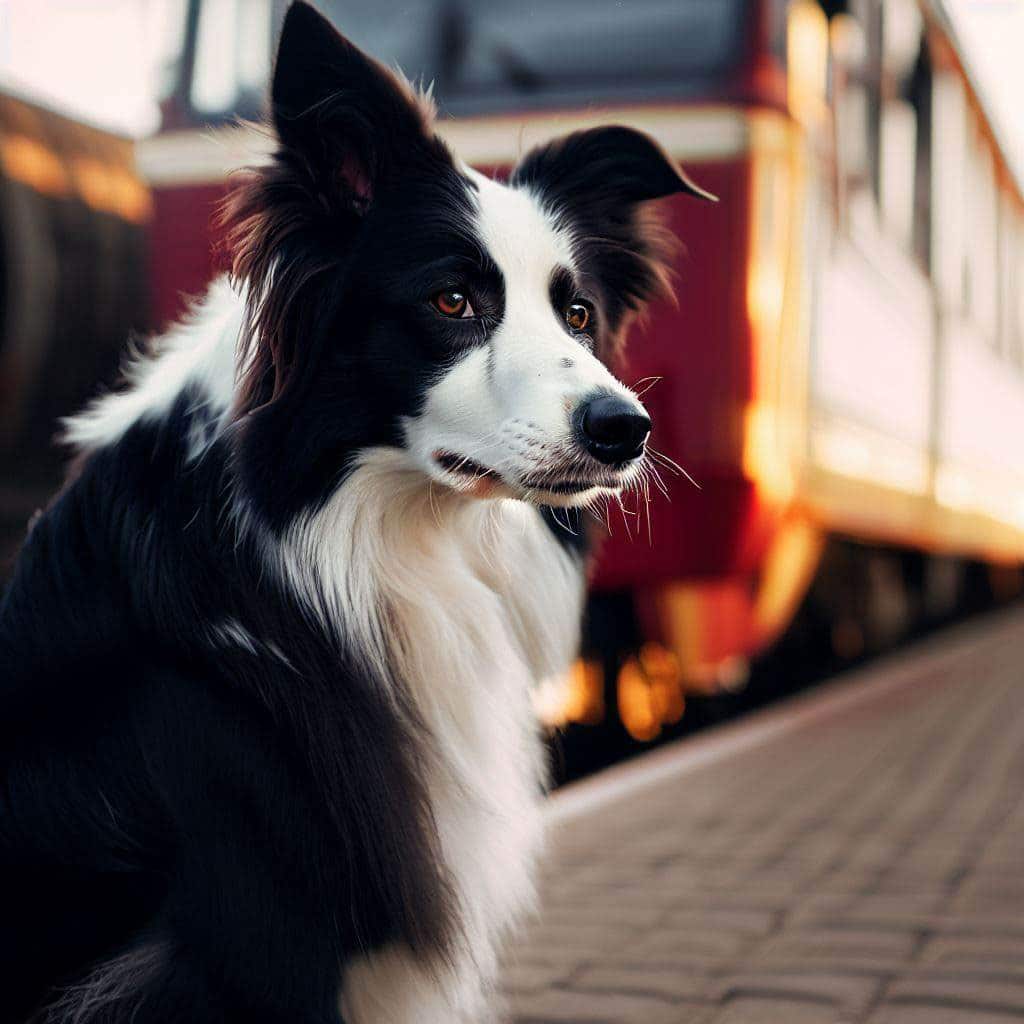
How to Travel with Dogs on Trains
Traveling by train with your dog can be a fun, relaxing, and eco-friendly way to explore new landscapes. However, ensuring your dog’s safety, understanding rail policies, and choosing the “best dogs to travel with” on trains can make your journey more enjoyable. Here’s your guide to train travel with dogs.
Essential Safety Measures for Train Travel
Safety is paramount when traveling with dogs on trains. Here are some important measures:
- Crates or Carriers: Depending on the train company’s rules, you may need to keep your dog in a secure, ventilated carrier or crate.
- Leashes and Harnesses: Even if your dog is allowed out of their carrier, keep them on a leash and harness to prevent them from wandering off.
- Identification: Ensure your dog is microchipped and has a collar with an ID tag containing your contact information.
Understanding Rail Policies for Dog Travel
Train companies have different policies regarding traveling with dogs, so it’s crucial to research ahead of time. For example:
- Size Restrictions: Some companies only allow small dogs, while others may permit larger dogs. The definition of “small” can vary, so check the specific weight or size limitations.
- Carrier Requirements: Some trains require dogs to be in a carrier at all times, while others might allow dogs to sit on the floor or in your lap.
- Fees: Many train companies charge a pet fee, which can range from a small flat rate to a substantial percentage of your fare.
Best Dog Breeds for Train Travel
When considering the “best dogs to travel with” by train, you should consider breeds that are calm, adaptable, and comfortable in confined spaces. Here are five examples:
- Cocker Spaniel: Known for their adaptable and easy-going nature, Cocker Spaniels generally adjust well to train travel.
- Cavalier King Charles Spaniel: Their small size and calm temperament make them ideal train travel companions.
- French Bulldog: With their small stature and relaxed demeanor, French Bulldogs often handle train travel well.
- Bichon Frise: They are typically good-natured, friendly, and do well in various travel conditions.
- Shih Tzu: Known for their calm and friendly nature, Shih Tzus can make train travel a breeze.
Tips for Keeping Dogs Calm and Comfortable on Trains
Keeping your dog calm and comfortable can transform them into the “best dogs to travel with” on trains. Here are some tips:
- Familiarization: Let your dog get used to the carrier at home with short periods before the trip.
- Comfort Items: Bring familiar blankets and toys to comfort your dog during the journey.
- Hydration and Food: Ensure your dog has access to water and refrain from feeding them just before the journey to avoid motion sickness.
- Calming Supplements or Toys: Consult your vet about safe, calming supplements or consider bringing calming toys.
- Regular Breaks: Schedule your travel around station stops where you can take your dog out for a quick walk.
Train travel with dogs requires planning and understanding of both your dog’s temperament and the train company’s rules, so plan well ahead.
Boat and Ship Travel with Dogs
Taking to the seas with your furry friend can be an exciting adventure. However, just as with any form of travel, ensuring your dog’s safety, comfort, and readiness for the journey is crucial. Let’s explore these considerations and find out who the “best dogs to travel with” on water are.
Safety and Comfort Considerations for Water Travel
When traveling with dogs on boats or ships, consider the following for their safety and comfort:
- Life Jackets: A well-fitting dog life jacket is essential. It should have a sturdy handle for lifting your dog out of the water if necessary.
- Hydration and Shade: Ensure there’s a constant supply of fresh water and shaded areas to prevent overheating.
- Non-Slip Matting: To prevent slips and falls, invest in non-slip matting, particularly around entry and exit points.
- Secure Area: Have a secure area where your dog can’t fall overboard, especially when the boat is in motion.
- Sea Sickness: Just like people, dogs can get seasick. Consult with your vet about motion sickness medications for dogs.
Breeds Known for Being Good Sailors: The Best Dogs to Travel With on Water
Some dog breeds are known for their affinity with water and therefore make the “best dogs to travel with” on boats or ships. They typically have strong swimming abilities, sturdy bodies, and adaptable temperaments. Here are a few examples:
- Labrador Retriever: Labs love water and are known for their strong swimming skills, making them great boat companions.
- Portuguese Water Dog: Bred for water work, these dogs are natural swimmers and generally comfortable on boats.
- Newfoundland: These large dogs are strong swimmers and were historically used for water rescues.
- Golden Retriever: Goldens love swimming, are quick learners, and adapt well to new environments.
- English Setter: They are known for their adaptability and gentle nature, making them great companions on boat trips.
Preparing Your Dog for Its First Boat Trip
Before setting sail, it’s vital to prepare your dog to ensure they become one of the best dogs to travel with on water. Here are some tips:
- Gradual Introduction: Let your dog explore the boat while it’s docked to familiarize themselves with the environment.
- Swimming Skills: Ensure your dog can swim. Consider a few swimming lessons if needed.
- Life Jacket Training: Let your dog wear the life jacket at home first to get used to it.
- Behavior Training: Teach commands like “stay” and “come” to keep them safe on the boat.
- Mock Trips: Do a few short mock trips to get your dog used to the boat’s motion.
Traveling by boat or ship with your dog can be a wonderful experience, especially when the dog is well-prepared and comfortable. With the right safety measures, breed considerations, and preparation, your dog can be as happy on the water as you.
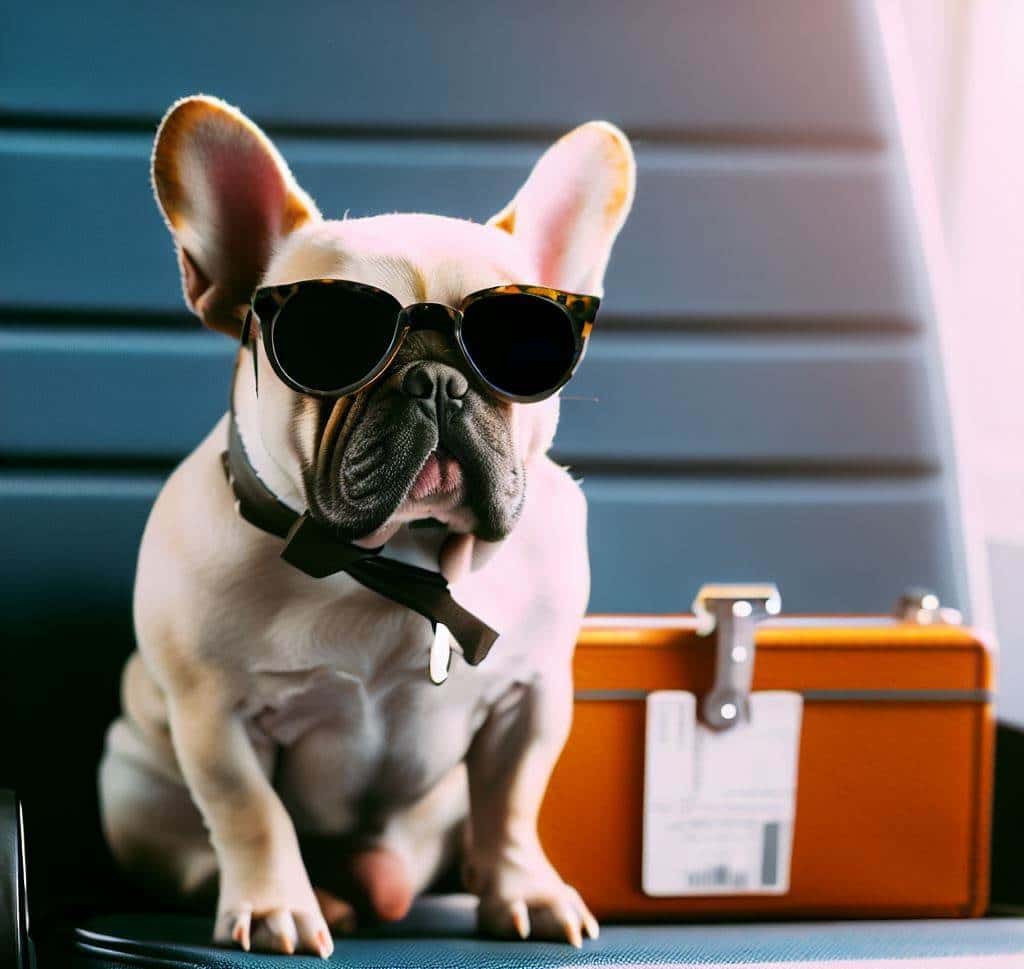
Taking to the Skies: Air Travel with Dogs
Traveling by plane can often be the fastest and most efficient way to cover long distances, but what about when our furry friends are part of the journey? Understanding the ins and outs of airline policies, weighing the pros and cons, and knowing the “best dogs to travel with” by air can make all the difference in ensuring a smooth flight for both you and your dog.
Understanding Airline Policies for Dog Travel
Airline policies for dog travel vary, but some general guidelines are usually common:
- Cabin Travel: Some airlines allow small dogs to travel in the cabin in an airline-approved carrier that fits under the seat in front of you. Dog breeds known for their calm demeanor and small size, such as French Bulldogs or Cavalier King Charles Spaniels, are often suitable for cabin travel.
- Cargo Hold: Larger dogs typically travel in the cargo hold in an airline-approved crate. Breeds must be sturdy and adaptable to changing environments, like Labrador Retrievers or Golden Retrievers.
- Restricted Breeds: Some airlines have restrictions on certain breeds, especially brachycephalic (flat-faced) dogs like Bulldogs or Pugs due to potential breathing issues at high altitudes.
Always check with the specific airline for their exact policy before planning your trip.
Pros and Cons of Air Travel with Dogs
Air travel with dogs comes with its own set of advantages and disadvantages:
Pros:
- Speed: Air travel is the fastest way to cover long distances, making it less stressful for dogs who don’t handle long periods of travel well.
- Safety: Airlines have specific safety regulations for pet travel.
- Professional Handling: Skilled airline staff are trained in pet handling and emergency procedures.
- Direct Routes: Non-stop flights reduce the need for potentially stressful transfers.
- Travel Companion: You don’t have to leave your best friend behind.
Cons:
- Stress: Some dogs may find the experience of flying stressful due to noise, temperature changes, and unfamiliar environments.
- Health Risks: Air travel can be riskier for older dogs or those with health issues, especially those prone to breathing difficulties.
- Limited Mobility: Dogs can’t move around freely during the flight, which can be hard for breeds with high energy levels.
- Cost: Flying with a dog can be expensive, considering airline fees and the cost of approved carriers or crates.
- Preparation and Planning: More planning is required to ensure your dog meets all airline requirements for travel.
The Best Dogs to Travel With by Plane: Breeds That Airlines Prefer
When looking for the “best dogs to travel with” by air, consider the following breeds:
- French Bulldogs: Despite being brachycephalic, French Bulldogs are popular cabin travel dogs due to their small size and generally calm disposition.
- Cavalier King Charles Spaniels: Their friendly, adaptable nature and small size make them good travel companions.
- Labrador Retrievers: Labs are often accepted for cargo travel due to their adaptable nature and sturdy health.
- Golden Retrievers: Their calm demeanor and adaptability make them suitable for cargo travel.
- Cocker Spaniels: Their moderate size and easy-going temperament make them good candidates for air travel.
Remember, no matter the breed, each dog is an individual. Prior training, temperament, and familiarity with travel are critical considerations. Working with your vet and possibly a professional trainer can help ensure that your dog becomes one of the travel companions on a plane.
International Travel with Dogs
One of the joys of being a dog owner is sharing life’s adventures with your faithful companion. But when your travels take you across international borders, it’s vital to understand and prepare for the additional considerations that come into play.
In this guide, we’ll explore international travel with dogs, quarantine laws, pet passports, breed-specific regulations, and some of the “best dogs to travel with” across the globe.
Overview of Quarantine Laws and Pet Passports
International travel with dogs often involves dealing with quarantine laws and pet passports. Countries have these regulations to prevent the spread of diseases, with rabies being a top concern.
A pet passport is a collection of all your pet’s essential documents, including proof of vaccines, microchip information, and often, a clean bill of health from a vet. Some countries, like those within the European Union, have standardized pet passports, while others require specific documentation.
Quarantine laws differ by country and may require your pet to be isolated for a period upon arrival to ensure they’re not carrying any communicable diseases.
Places like Australia and New Zealand are well-known for having strict quarantine procedures. It’s crucial to check the quarantine regulations of your destination country well in advance of your travel.
Breed-Specific Regulations to Know Before Traveling Internationally with Dogs
Certain breeds are subject to regulations or outright bans in some countries due to perceived aggressiveness or health concerns. For example:
- Pit Bull Breeds: These breeds are restricted or banned in parts of Australia, New Zealand, and the United Kingdom.
- Brachycephalic Dogs: Breeds with short noses, like Bulldogs or Pugs, can struggle with air travel due to their respiratory systems. Some airlines restrict brachycephalic dogs for their safety.
- Large Breeds: Extra-large breeds like Great Danes may have trouble traveling because of their size and the lack of suitable accommodations, particularly for air travel.
The Best Dogs to Travel With Internationally: Breeds Known for Their Adaptability
When thinking about the “best dogs to travel with” internationally, consider breeds known for their adaptability and resilience:
- Labrador Retrievers: Known for their excellent temperament and adaptability, Labs are comfortable in many environments.
- Border Collies: These intelligent dogs are highly trainable, making them adaptable to new situations.
- Beagles: Beagles are sturdy, friendly, and typically good with all kinds of people and other animals.
- Golden Retrievers: Their friendly demeanor and adaptability make them suitable for various travel situations.
- Mixed Breeds: Often, mixed breeds have the combined traits of different breeds, making them adaptable to a variety of circumstances.
It’s essential to prepare your dog for any journey. Familiarize them with their carrier, gradually acclimate them to longer travel times, and always have a vet check them before leaving.
Training Tips for Making Your Dog a Great Travel Companion
Every dog owner yearns for a well-behaved, adaptable companion that makes the perfect travel partner. Training is the key to transforming your furry friend into one of the best dogs to travel with on your trips.
It’s not just about breed, size, or temperament—training plays a vital role in preparing your dog for various travel experiences. We’ll cover basic training requirements, the importance of socialization, and how to manage travel anxiety in dogs.
Basic Training Requirements for Traveling Dogs
Before embarking on any trip, ensure your dog understands basic commands. If you’re after some great training tips, you can find some here. These include “Sit”, “Stay”, “Come”, “Down”, and “Leave it”. These commands are crucial for your dog’s safety and the convenience of travel:
- “Sit” and “Stay”: Use these commands during check-ins or when you need your dog to remain calm in a busy environment.
- “Come”: This command is essential if your dog gets loose in an unfamiliar place.
- “Down”: It can be useful during long flights or car rides to help your dog settle and be comfortable.
- “Leave it”: This command helps prevent your dog from picking up potentially dangerous objects or food during your travel.
Training should be consistent, using positive reinforcement, and take place in different environments to familiarize your dog with obeying commands in various situations.
Socialization and Its Role in Travel Training
Socialization is a significant part of making your dog one of the best dogs to travel with. It involves exposing your dog to different people, environments, sounds, and other animals in a positive and controlled way.
This exposure helps your dog become comfortable in various situations they might encounter during travel.
For example, you can start by taking your dog to local parks, outdoor cafes, or pet-friendly stores. Gradually introduce them to busier environments like city streets or crowded places.
Always reward them for calm and friendly behavior to reinforce positive associations with these experiences.
Addressing and Managing Travel Anxiety in Dogs
Travel anxiety in dogs can manifest as restlessness, excessive drooling, barking, or even aggressive behavior. It can make travel challenging for both the pet and the owner.
Here are a few tips to address and manage this issue:
- Familiarization: Gradually get your dog used to travel conditions. Start with short car rides or spending time in a stationary vehicle before embarking on longer journeys.
- Comfort Items: Bring along your dog’s favorite toys, blanket, or a piece of clothing that smells like you. These items can provide a sense of security.
- Exercise: Regular exercise before the journey can help burn off excess energy and calm your dog.
- Consult a Vet: If your dog’s anxiety is severe, consult your vet. They can provide advice and, if necessary, prescribe medication to help manage your dog’s anxiety.
With proper training, socialization, and anxiety management, any dog can become a great travel companion. Remember, the goal is to ensure that both you and your dog enjoy the journey, making your dog truly one of the travel companions.
Dog Travel Essentials: What to Pack
As avid dog travelers, we can attest that preparation is key when it comes to transforming your dog into one of the best dogs to travel with. A well-packed bag can make your journey more relaxed and fun-filled, ensuring you have everything you need to keep your dog safe and comfortable. We’ll discuss essentials for food and water, comfort items, and necessary health and safety items.
Food and Water Necessities for Traveling Dogs
When it comes to food, it’s advisable to stick to your dog’s usual diet to avoid any potential stomach upsets during your trip.
Pack enough food for the entire journey plus a little extra in case of any delays. Don’t forget to include a portable, collapsible food and water dish for feeding times on the go.
Hydration is crucial, especially during long journeys. Always carry enough fresh water for your dog. If you’re traveling to a location with uncertain water quality, consider bringing a water purification method, like a portable purifier or purification tablets.
Comfort Items and Toys: Making Your Dog Feel at Home on the Road
Creating a sense of familiarity can greatly reduce travel-related stress for your dog.
Pack their favorite blanket, bed, or a shirt that smells like you to provide them with a comforting sense of home.
Toys can also play a pivotal role in keeping your dog entertained and stress-free during the journey. Bring along a variety of toys, including chew toys and interactive ones like puzzle feeders. These can keep your dog occupied during long travel hours, making them one happy little camper on your trip.
Health and Safety Items Every Dog Owner Should Pack
Prioritizing your dog’s health and safety during travel is paramount. A first-aid kit is an essential item every pet owner should have. It should include bandages, tweezers, a digital thermometer, and a list of emergency contact numbers, including your vet’s.
Don’t forget to pack any regular medications your dog may need, as well as a copy of their vaccination records—particularly important for international travel or boarding facilities.
A sturdy leash and a well-fitting collar or harness are also crucial for safety during travel. For added security, consider an ID tag with your contact information or a microchip in case your dog gets lost.
A travel crate or car safety harness is vital for keeping your dog secure during car journeys, ensuring they remain safe in case of sudden stops or accidents.
Finally, remember to pack poop bags for easy clean-ups during travel. Many places require dog owners to clean up after their pets, and it’s a good practice for keeping travel locations clean.
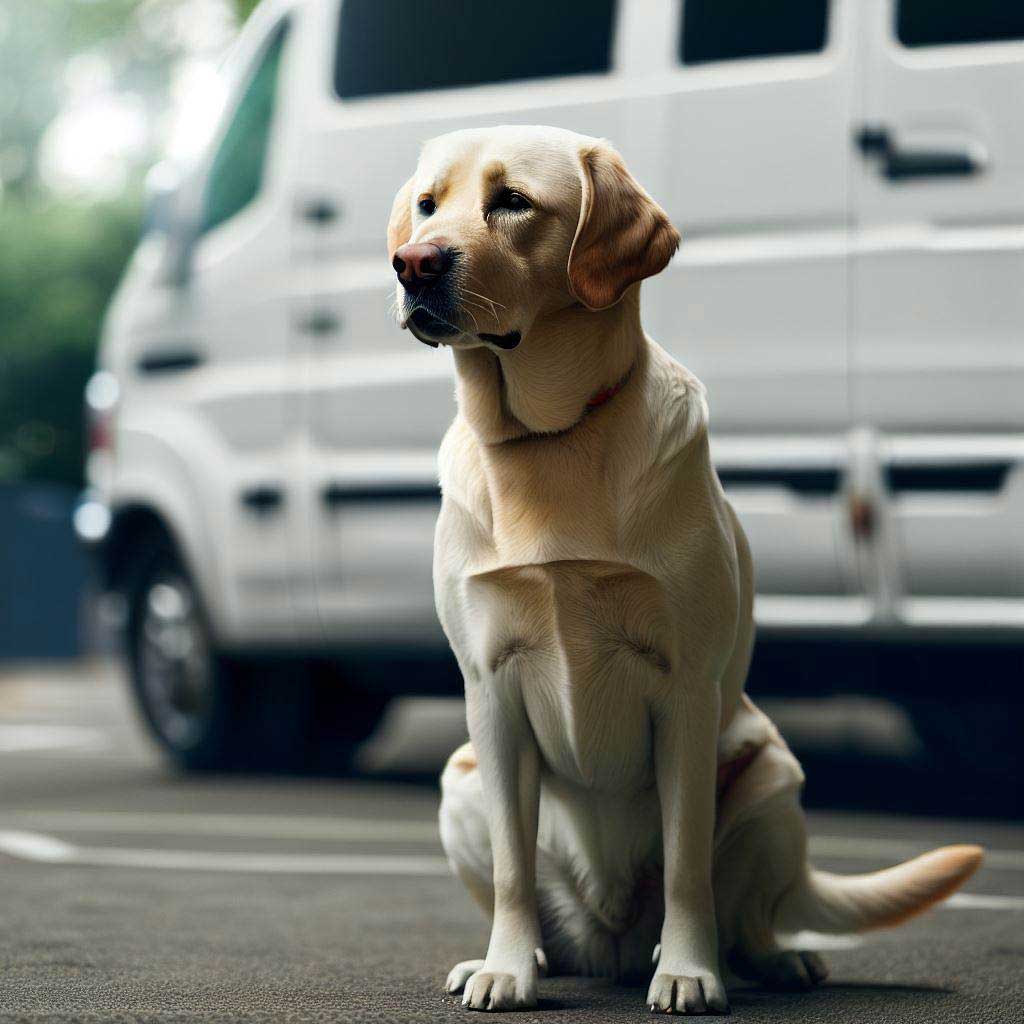
Why it is Important to Consult Your Vet Before You Travel With Your Pet
Embarking on a journey with your dog can be an exciting experience. However, to ensure they remain one of the best dogs to travel with, there are essential precautions to consider.
Among the most crucial is consulting with your vet. Here’s why:
What You Need to Consider Medically With Your Pet
Before you set off, your pet’s medical conditions need to be evaluated to ensure they are fit for travel. Below are five key considerations:
- Vaccinations: Is your dog up-to-date with their shots? Travel can expose your pet to different diseases, so it’s vital to ensure their vaccinations are current.
- Heartworm, flea, and tick prevention: Depending on your destination, your dog may be exposed to various pests. Ask your vet about preventative treatments.
- Medication: If your dog takes any regular medication, ensure you have enough for the journey and know how to administer it under travel conditions.
- Health Certificates: Many airlines and international destinations require a Certificate of Veterinary Inspection (CVI), proving your pet is healthy and safe to travel.
- Motion sickness: If your dog hasn’t traveled much, discuss with your vet the potential for motion sickness and what to do if symptoms occur.
Certain Breeds Needing a Check-Up Before Traveling
Not all breeds are created equal, and some require extra attention before hitting the road:
- Brachycephalic breeds like Bulldogs, Pugs, and Boston Terriers can struggle with travel due to their short noses causing breathing difficulties.
- Large breeds such as Great Danes or Saint Bernards may require extra space and comfort checks, particularly for long-haul travel.
- Toy breeds like Chihuahuas or Yorkies can be anxious travelers and might need anxiety management strategies.
- Elderly dogs of any breed can struggle with the stresses of travel, and a thorough health check is recommended.
- Breeds prone to hip dysplasia, like German Shepherds or Golden Retrievers, may need pain management strategies for long car rides.
Pros vs Cons of Seeing Your Vet Before You Travel
Pros:
- Preventive Care: Your vet can provide preventative treatments for potential health threats at your destination.
- Peace of Mind: Knowing your dog is healthy and ready for travel eases anxiety.
- Emergency Prep: Your vet can advise on handling pet emergencies during travel.
- Medication Management: If your pet requires medication, your vet can guide on administering it on the road.
- Updated Health Records: Crucial for international travel or if you need to use a different vet.
Cons:
- Cost: Vet appointments can be costly, especially if additional treatments are needed.
- Time: Booking and attending a vet appointment requires time, which could be a challenge if you’re preparing for travel.
- Stress for your pet: Some pets find vet visits stressful.
- Unnecessary for short trips: If you’re taking a short trip and your pet is generally healthy, a visit might not be necessary.
- Availability: Depending on where you live and your vet’s schedule, getting an appointment can be a challenge.
Taking the time to consult with your vet before traveling can ensure your pet remains healthy and happy whilst traveling. Understanding potential health concerns and taking necessary precautions will make the journey more enjoyable for both of you.

Conclusion: Your Guide to Choosing the Best Dogs to Travel With
Traveling with your dog can be a joyous experience that brings you closer together, and it’s our hope that this guide will help you select the best dogs to travel with.
From cars to planes, boats, trains, and international journeys, there are numerous factors to consider, which we’ll recap in this conclusion.
Recap: The Factors That Make Certain Dogs Better Travel Companions
We have explored the various factors that make some dogs better companions for travel, from their temperament and size to their breed-specific characteristics.
Dogs with calm, adaptable temperaments, such as Labradors and Golden Retrievers, tend to handle travel stress better.
Smaller breeds like Beagles or French Bulldogs are often easier to accommodate in different travel situations, although larger dogs like the adaptable Labrador Retriever can also make fantastic travel companions if given the right conditions.
Health
Health also plays a significant role, with brachycephalic breeds like Bulldogs needing extra caution due to potential breathing difficulties, while older dogs or those with joint issues might need extra comfort considerations.
Additionally, preparing your dog for the journey by investing in training, socialization, and managing any potential travel anxiety can make the trip smoother for both of you.
We’ve also discussed the need for due diligence, such as understanding breed-specific regulations for international travel, airline policies, and safety requirements in different travel scenarios.
It’s essential to consult with a vet before embarking on your journey and pack travel essentials to ensure your dog’s comfort and safety.
Making a Decision: Assessing Your Own Dog’s Suitability for Travel
When it comes to assessing your own dog’s suitability for travel, consider their temperament, health, and how well they’ve adapted to new experiences in the past.
Consult your vet, discuss your travel plans, and consider any medical needs your dog may have. If your dog gets anxious in new situations, consider working with a professional trainer to help them become more comfortable with travel.
Remember, the best dogs to travel with isn’t necessarily about breed alone. It’s about the individual dog’s personality, health, and your commitment to making the journey as comfortable as possible for them.
Final Thoughts on the Best Dogs to Travel With
Traveling with your dog is a remarkable adventure that can create lifetime memories. Whether you’re choosing a breed known for being good travelers or preparing your existing pet for their first journey, remember that each dog is unique.
The best dogs to travel with are those that are loved, well-cared-for, and whose owners have taken the time to understand their specific needs and plan for their comfort and safety.
By considering everything we’ve covered in this guide, you can make informed decisions that ensure both you and your canine companion enjoy your travels to the fullest. Here’s to many fantastic adventures with your four-legged friend!
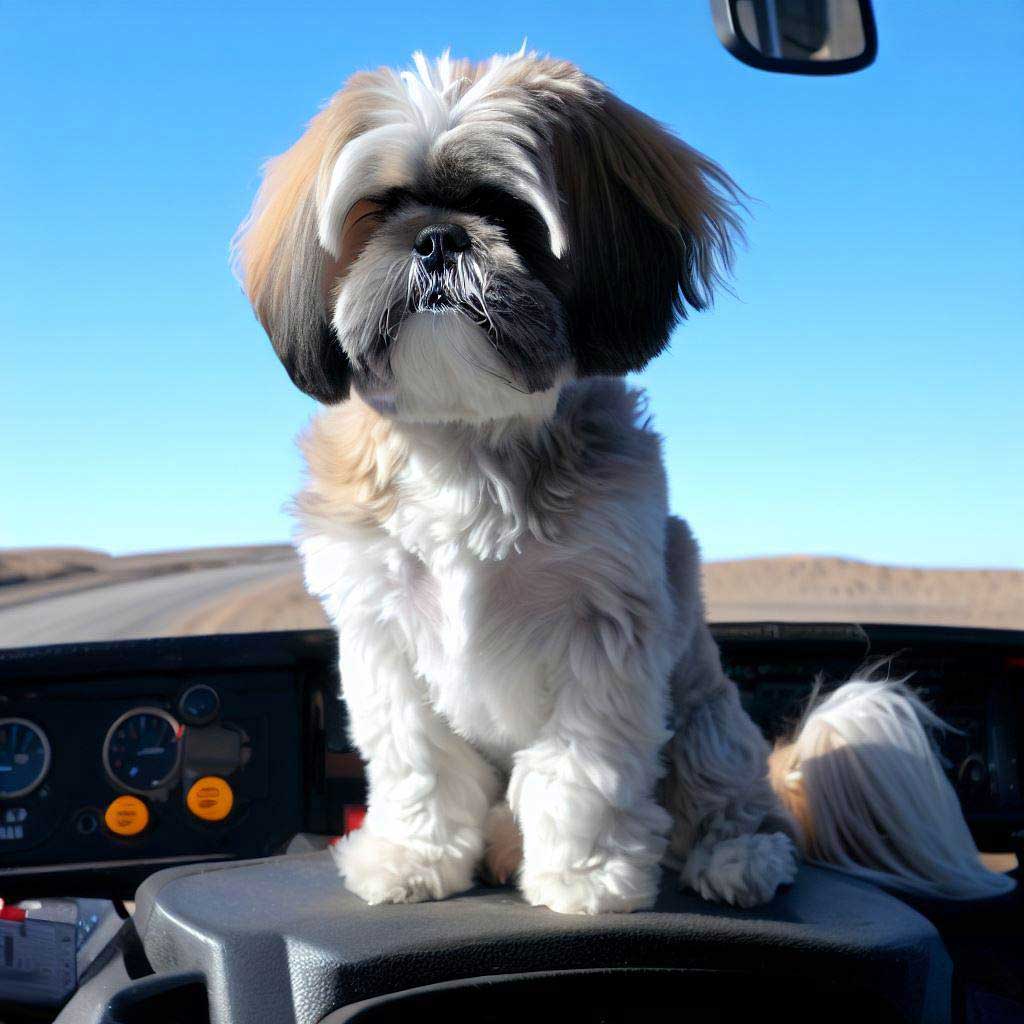
Frequently Asked Questions: Best Dogs to Travel With
What makes certain breeds the best dogs to travel with?
Different breeds have varying levels of adaptability, size, temperament, and health considerations that make them more or less suited to travel. Breeds known for their calm demeanor, compact size, and robust health typically travel better.
Are small dogs better for travel than larger breeds?
This largely depends on the mode of transportation. Small dogs are typically easier to travel with in planes as they can often fit in approved carriers under the seat. However, large dogs can also be great travel companions, especially for road trips.
What are some examples of the best dogs to travel with?
Bichon Frise, French Bulldogs, and Labradors are known for their adaptable nature. They’re generally calm, compact (or in Labrador’s case, good-natured and trainable), making them ideal for travel.
How should I prepare my dog for travel?
Start by ensuring your dog is in good health with a vet check-up. Gradually acclimate your dog to the travel carrier, car, or other modes of transportation. Pack essentials including food, water, comfort items, and safety gear.
Can all dogs travel on planes?
Most airlines have specific breed restrictions, usually concerning brachycephalic (flat-faced) breeds due to respiratory issues at high altitudes. Check with the airline for their specific policy.
What are some of the challenges of traveling with dogs?
Dogs may experience anxiety or motion sickness. Some locations have restrictions on dogs or require quarantine upon arrival. Traveling with a dog also requires more planning and preparation.
What can I do to alleviate my dog’s travel anxiety?
Familiarize your dog with the travel environment gradually and use positive reinforcement. Comfort items like a favorite blanket or toy can help. Consult your vet about potential medications or natural remedies.
How can I ensure my dog is safe during travel?
Always secure your dog in a vehicle. For plane travel, use an airline-approved crate. Never leave your dog unattended in a car, and ensure they are microchipped and have identification tags.
Are there any specific training exercises that can help prepare my dog for travel?
Crate training is very useful, as is getting your dog comfortable with car rides. Basic obedience commands are essential, and socialization can help your dog adjust to new environments more easily.
Do I need to bring any specific paperwork when traveling with my dog?
Yes, generally you should bring proof of vaccinations, a recent health certificate, and potentially a pet passport for international travel. Rules vary by destination, so research ahead of time.
Best dog breeds for plane travel
Breeds such as French Bulldogs, Cavalier King Charles Spaniels, and Maltese are often favored for plane travel due to their small size and generally calm temperament. Always consult the airline’s specific pet policies as they can vary widely.
What are the best dogs for travel and camping?
Labrador Retrievers, Australian Shepherds, and Border Collies are great dogs for travel and camping. They are known for their intelligence, energy, and love for outdoor activities, making them perfect companions for adventures.
What are the best small dogs for plane travel?
Small dogs like Pugs, Chihuahuas, and Yorkshire Terriers are often preferred for plane travel. Their compact size and adaptability to new surroundings make them suitable for air travel.
Best dogs for car travel
Golden Retrievers, Boxers, and Shih Tzus are considered good breeds for car travel. They are generally well-behaved, enjoy rides, and can relax during longer journeys.
What dogs that don’t travel well?
Breeds like Bulldogs and Pugs may struggle with travel due to respiratory issues. Highly anxious or overly energetic dogs might also find travel stressful. Individual temperament plays a significant role.
What’s the best dog for road trips?
Labrador Retrievers are often considered the best dogs for road trips due to their friendly nature, adaptability, and love of exploration.
What are great dog breeds you can fly with?
Small to medium-sized dogs like Bichon Frises, Poodles, and Cocker Spaniels are generally great for flying. Their temperaments and size usually fit well with airline restrictions.
List some best dogs for van life
Dogs like Vizslas, Greyhounds, and Dachshunds adapt well to van life. They are typically good with confined spaces and enjoy the traveling lifestyle.
What dogs are best for traveling?
The best dogs for traveling usually include adaptable, obedient, and friendly breeds like Golden Retrievers, Labradors, and Poodles.
What dog can you take everywhere?
Service dogs are trained to accompany their handlers everywhere. For non-service dogs, breeds known for their good behavior and adaptability, like Labradors, can often be taken many places.
What is the easiest pet to travel with?
A small dog that is used to traveling, especially those trained and socialized properly, are often considered the easiest pets to travel with.
What breed of dog can fly?
Most dog breeds can fly, but brachycephalic breeds like Bulldogs may have restrictions. Smaller breeds like Chihuahuas or Terriers are often more comfortable flying.
What friendly dog breeds handle boat travel?
Portuguese Water Dogs, Labrador Retrievers, and Newfoundlands are known to handle boat travel well. They often enjoy the water and adapt easily to the movement of a boat.
Why do dogs love sticking their face out of a car window?
Dogs love sticking their faces out of car windows to enjoy the rush of air and the multitude of scents. It stimulates their senses and provides mental enrichment.
Do companion dogs travel well?
Companion dogs, especially those trained as therapy or emotional support animals, usually travel well. They are often chosen for their calm and comforting nature.
Can puppies travel far in a car?
Puppies can travel far in a car but require more frequent stops for bathroom breaks, play, and food. Proper crate training and making the puppy comfortable will make any long road journey smoother.
